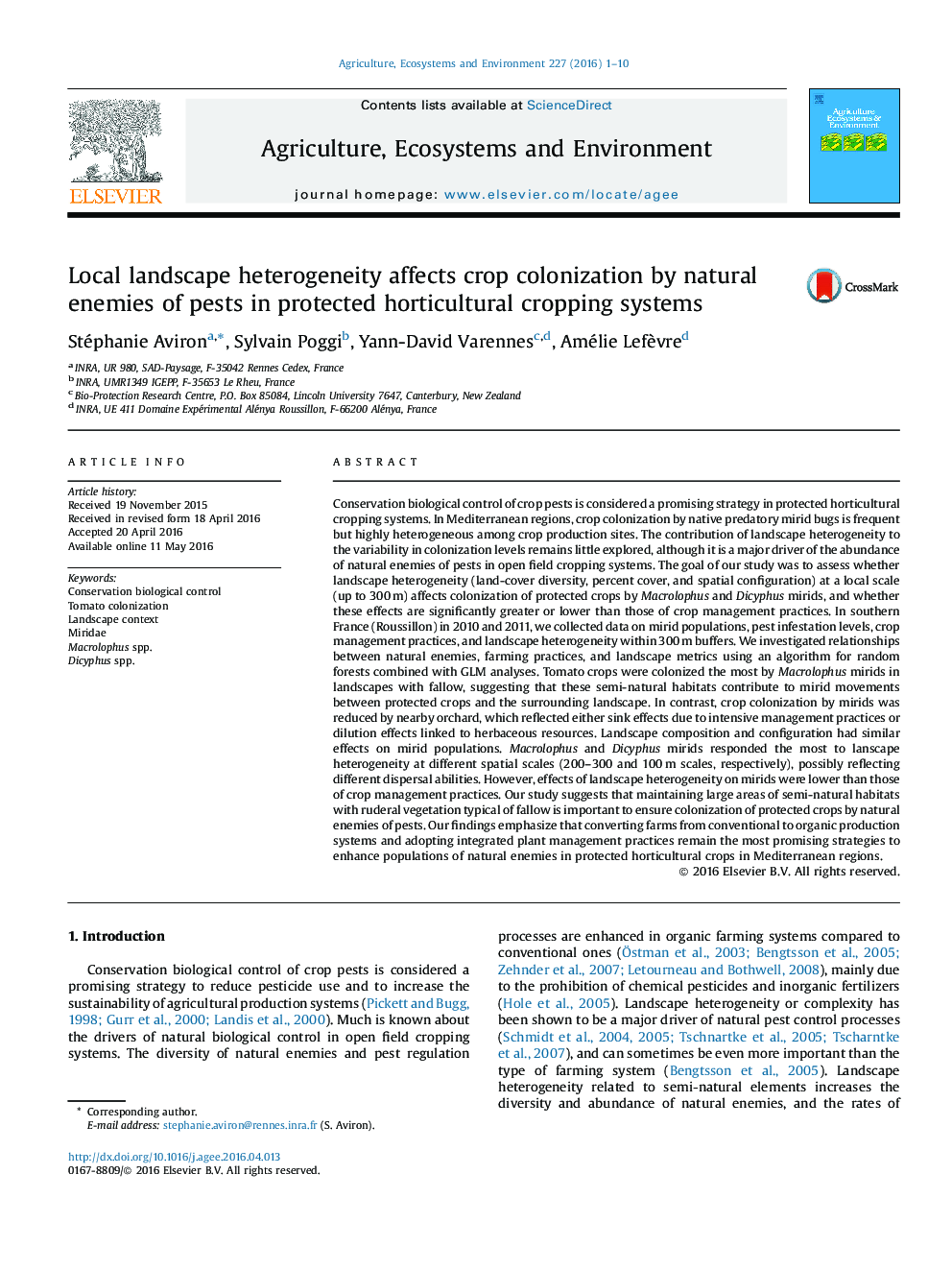| کد مقاله | کد نشریه | سال انتشار | مقاله انگلیسی | نسخه تمام متن |
|---|---|---|---|---|
| 2413521 | 1552025 | 2016 | 10 صفحه PDF | دانلود رایگان |
• Landscape heterogeneity affects protected crop colonization by predatory mirid bugs.
• These effects are measured at different spatial scales depending on mirid species.
• A role of source and sink/dilution is expected for fallow and orchard respectively.
• Landscape effects on mirids remain lower than effects of crop management practices.
Conservation biological control of crop pests is considered a promising strategy in protected horticultural cropping systems. In Mediterranean regions, crop colonization by native predatory mirid bugs is frequent but highly heterogeneous among crop production sites. The contribution of landscape heterogeneity to the variability in colonization levels remains little explored, although it is a major driver of the abundance of natural enemies of pests in open field cropping systems. The goal of our study was to assess whether landscape heterogeneity (land-cover diversity, percent cover, and spatial configuration) at a local scale (up to 300 m) affects colonization of protected crops by Macrolophus and Dicyphus mirids, and whether these effects are significantly greater or lower than those of crop management practices. In southern France (Roussillon) in 2010 and 2011, we collected data on mirid populations, pest infestation levels, crop management practices, and landscape heterogeneity within 300 m buffers. We investigated relationships between natural enemies, farming practices, and landscape metrics using an algorithm for random forests combined with GLM analyses. Tomato crops were colonized the most by Macrolophus mirids in landscapes with fallow, suggesting that these semi-natural habitats contribute to mirid movements between protected crops and the surrounding landscape. In contrast, crop colonization by mirids was reduced by nearby orchard, which reflected either sink effects due to intensive management practices or dilution effects linked to herbaceous resources. Landscape composition and configuration had similar effects on mirid populations. Macrolophus and Dicyphus mirids responded the most to lanscape heterogeneity at different spatial scales (200–300 and 100 m scales, respectively), possibly reflecting different dispersal abilities. However, effects of landscape heterogeneity on mirids were lower than those of crop management practices. Our study suggests that maintaining large areas of semi-natural habitats with ruderal vegetation typical of fallow is important to ensure colonization of protected crops by natural enemies of pests. Our findings emphasize that converting farms from conventional to organic production systems and adopting integrated plant management practices remain the most promising strategies to enhance populations of natural enemies in protected horticultural crops in Mediterranean regions.
Journal: Agriculture, Ecosystems & Environment - Volume 227, 1 July 2016, Pages 1–10
